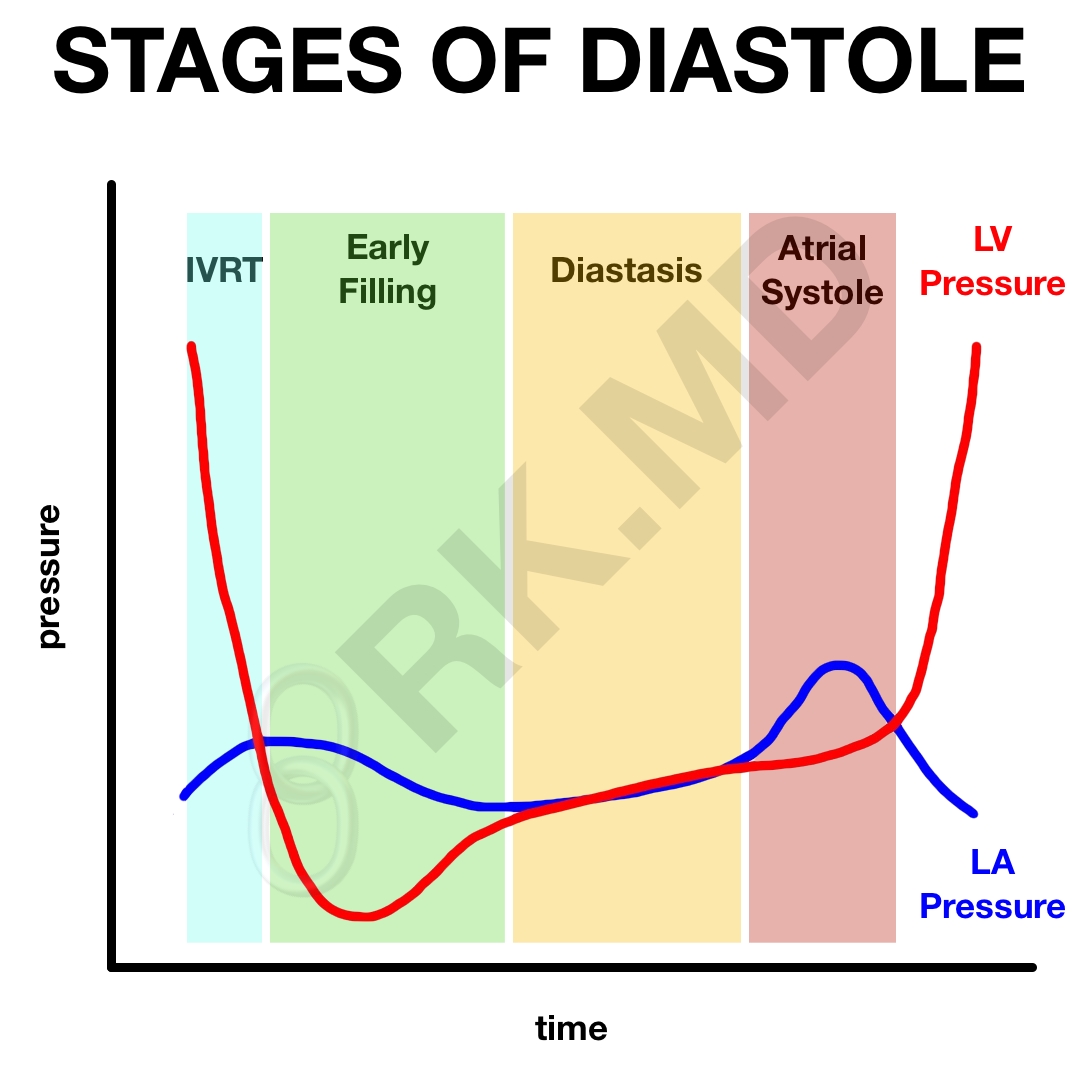The left ventricle’s (LV) variously arranged muscle fibers twist and contract during systole, storing potential energy as blood is ejected (imagine wringing water out of a towel). This stored energy is released in diastole: an energy-dependent myocardial relaxation divided into four phases.
- Isovolumetric Relaxation Time (IVRT): interval between aortic valve (AoV) closure and the beginning of LV filling
- Rapid Filling: mitral valve (MV) opens, blood suctioned into LV with the creation of flow vortices
- Diastasis: LV and left atrial (LA) pressures equalize limiting additional inflow
- Atrial Systole (“kick”): atrial contraction ↑ LA – LV pressure gradient promoting additional blood flow into the LV cavity (20-30% of stroke volume in healthy patients, up to 50% in poorly compliant LV).
Pressure gradients are important during diastole. If the LV is poorly compliant due to chronic hypertension, infiltrative disease, etc., there won’t be much of a gradient between the LA and LV. This, in turn, results in poor LV filling and a compromised stroke volume. Arrhythmias can compound the problem by eliminating the all-important atrial kick to drive more volume into the stiff LV. 👨🏽⚕️
Drop me a comment below with your insight and questions!






